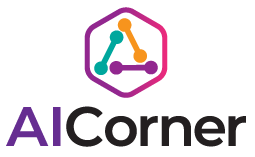Owing to rapid urbanization and increasing environmental challenges, cities across the globe are leveraging artificial intelligence (AI) to transform their conventional way of planning and management. Ultimately, leveraging AI in urban planning can help spawn smarter cities that are better performing and more sustainable — aimed at raising the quality of life. The paper discusses how the proliferation of AI will impact cities — for better or for worse.
The Need for Smarter Cities
In a world where many are flocking to the city, how do cities manage resources and infrastructure while delivering enough services for people living with promise in urban centers? As they evolve, modern cities are changing faster than traditional methods of urban planning can keep up with. It is this where AI comes in place, with tools to automate the task of processing vast data for future trends and acting as an assistive manager opting for much faster responsive actions.
Key Areas of AI Application in Urban Planning
1. Traffic Management and Transportation
AI Changes the Way Cities Control Traffic & Public Transit
Adaptive traffic light systems that constantly learn from the real-time reactions of the residents
Traffic flow forecasting models to ensure timely traffic flow regulation
Tuned public transportation schedules on top of routes, according to (forecasted or real-time?) patterns
Smart parking directs drivers toward open spots, something that can minimize congestion
2. Energy Efficiency and Sustainability
HOW AI HELPS CITIES THINK GREEN AND SAVE ENERGY
Real-time supply-demand matched smart grid.
Optimizing energy infrastructure just as predictive maintenance practices with almost zero waste and downtime.
Scheduled and Route Optimized Collection of Management
Artificial intelligence-driven energy-saving building management systems
3. Urban Design and Land Use
AI-based tools are changing the way that urban planners think about city design.
Optimal neighborhood and city layout through generative design algorithms
The use of treasure troves in predictive models for population growth and demographic changes, to inform long-term planning decisions
Satellite imagery and street-level data are analyzed to determine where green space creation or urban renewal is warranted.
4. Public Safety and Emergency Response
How AI is improving city emergency response & public safety.
The article identifies several advantages (and just some potential uses) for the use by law enforcement in predictive policing that can better identify areas to allocate valuable police resources.
Surveillance Utilizes AI Surveillance for Preemptive Safety Detection of Threats
Route and Asset Optimization for Emergency Response
5. Water Management
And despite all the efforts, AI will be a lot more helpful in ensuring that cities are managing their water resources much better.
Machine learning for leak detection in water infrastructure
Predictive models of water consumption to make its distribution more efficient
Thus, smart irrigation systems save water in public areas.
Benefits of AI-Driven Urban Planning
Greater Efficiency: Often, AI can sift through much larger datasets than a human planner could in the same period and come to more timely data-driven decisions.
Cost Savings: Thanks to the power of predicting maintenance and resource optimization, AI can help cities reduce costs for operations.
Improved Sustainability: AI can significantly cut down on the amount of energy it takes to solve problems with a highly likely environmental impact.
Improved Quality of Life: Intelligent city management can all together remove traffic congestion, enhance public services, and secure our lives from the urban environment.
Adaptability: AI systems can learn and evolve based on changing circumstances, thereby creating smarter cities that are more equipped to respond to future challenges.
Challenges and Considerations
Although there are substantial potential benefits of using AI in urban planning, it is not without challenges:
According to data privacy and security routine collection and use of massive amounts brings the fear or activity of hacking into question.
Equity and Inequity: This aligns with the apprehension that people have when they state that AI-driven systems may contribute to the worsening of gaps in existing inequitable behavior.
Despite these benefits, there are a few key challenges that city planners may face when implementing AI technology in urban planning. At present, the application of AI in cities is still relatively limited due to the following challenges.
The Future of AI-Driven Urban Planning
The future potential of AI in urban planning is immense. If AI technology continues to advance at the same rate, we can expect to see the following innovations and trends in urban planning shortly.
Conclusion
AI-driven urban planning presents a unique opportunity to create the next generation of smarter, more efficient cities that are genuinely designed for and by their residents. While many challenges and obstacles remain, the potential benefits are enormous in terms of sustainability, efficiency, and quality of life. As cities around the world continue to grow and evolve, AI and other advanced technologies will be crucial for empowering urban planners to design the resilient, sustainable cities of the future.

